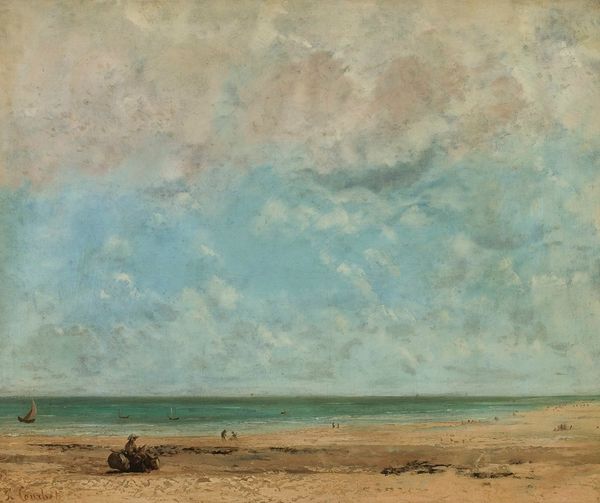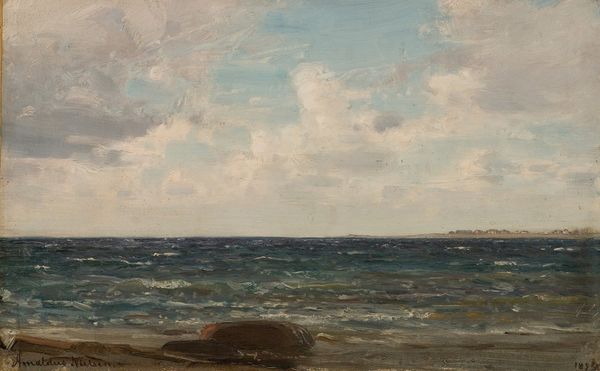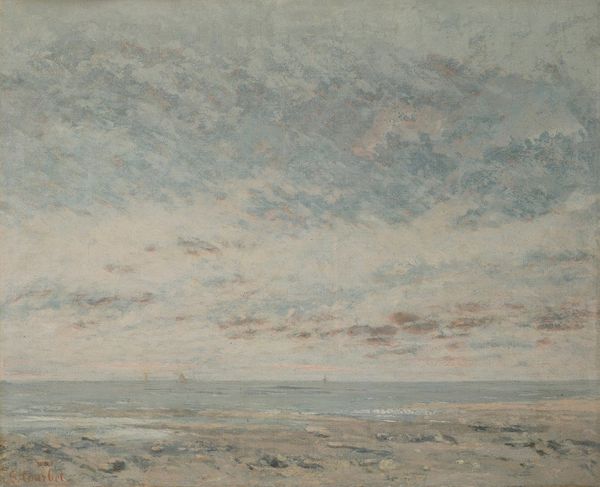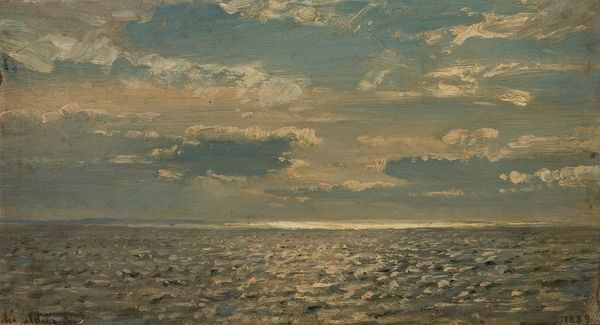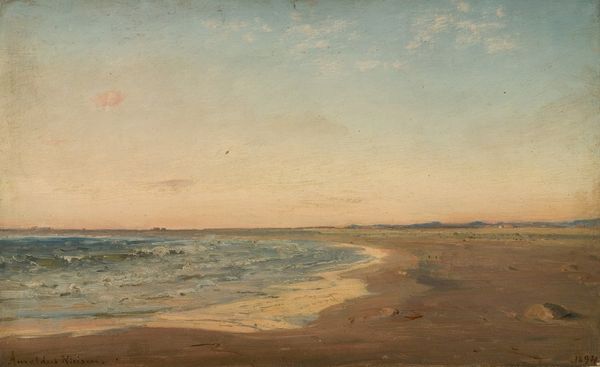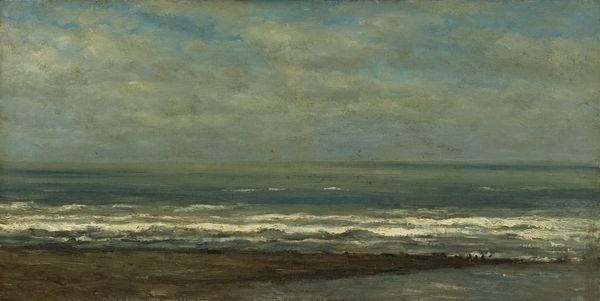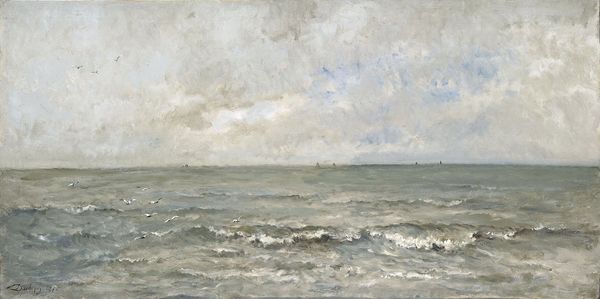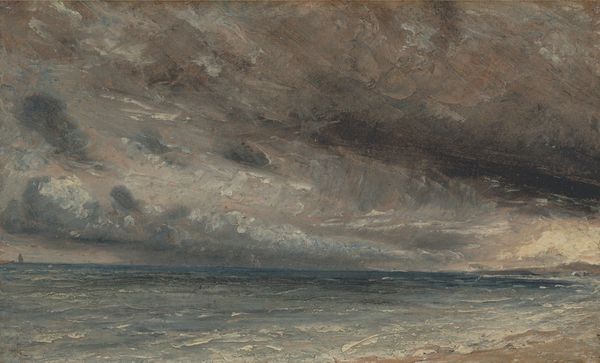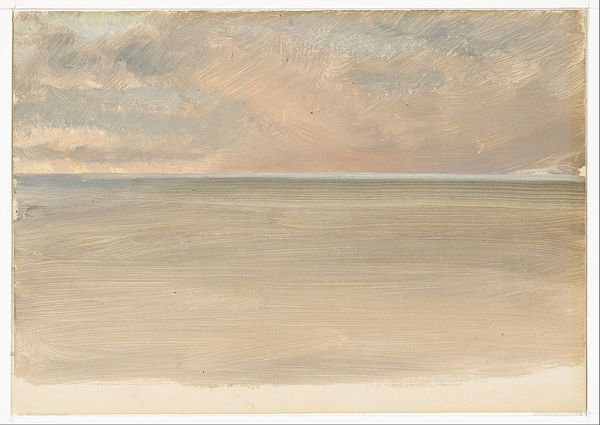
Copyright: Public Domain: Artvee
Editor: We're looking at "Calm Sea," an oil painting by Gustave Courbet from 1866. There's something so simple and striking about it. It’s dominated by the sky, this huge expanse of cloud, which gives it a very powerful presence, a slightly melancholic feel. How would you interpret this work? Curator: The visual tension in "Calm Sea" stems from its composition. Observe how Courbet divides the canvas: approximately two-thirds devoted to the sky, and one-third to the sea and shore. This imbalance foregrounds the atmospheric effects, the subtle gradations of light and shadow playing across the clouds. It seems Courbet isn't as interested in accurately depicting spatial recession as he is in exploring pictorial flatness. Editor: Flatness, interesting! I hadn’t considered that. It does flatten out the landscape somewhat. But how does that tie into our understanding? Curator: Note how the horizon line nearly cuts the picture plane in half and parallels it, emphasizing the canvas's surface and material properties. He is manipulating your focal point. Courbet invites the viewer to actively engage with the picture not just as a representation but as a constructed object, inviting, one might say, deconstruction. Do you see how the textures themselves play a role? Editor: Yes! I'm really noticing the texture of the paint now. It is quite thick in places. It gives it real depth in an unusual way! Thank you. Curator: Exactly! It's these formal qualities that construct its meaning. By analyzing its visual components, such as the color, lines, and texture, we better see his goals and achieve better aesthetic insight. Editor: Right! It all comes down to the execution, which I see a bit clearer now. Thank you.
Comments
No comments
Be the first to comment and join the conversation on the ultimate creative platform.
